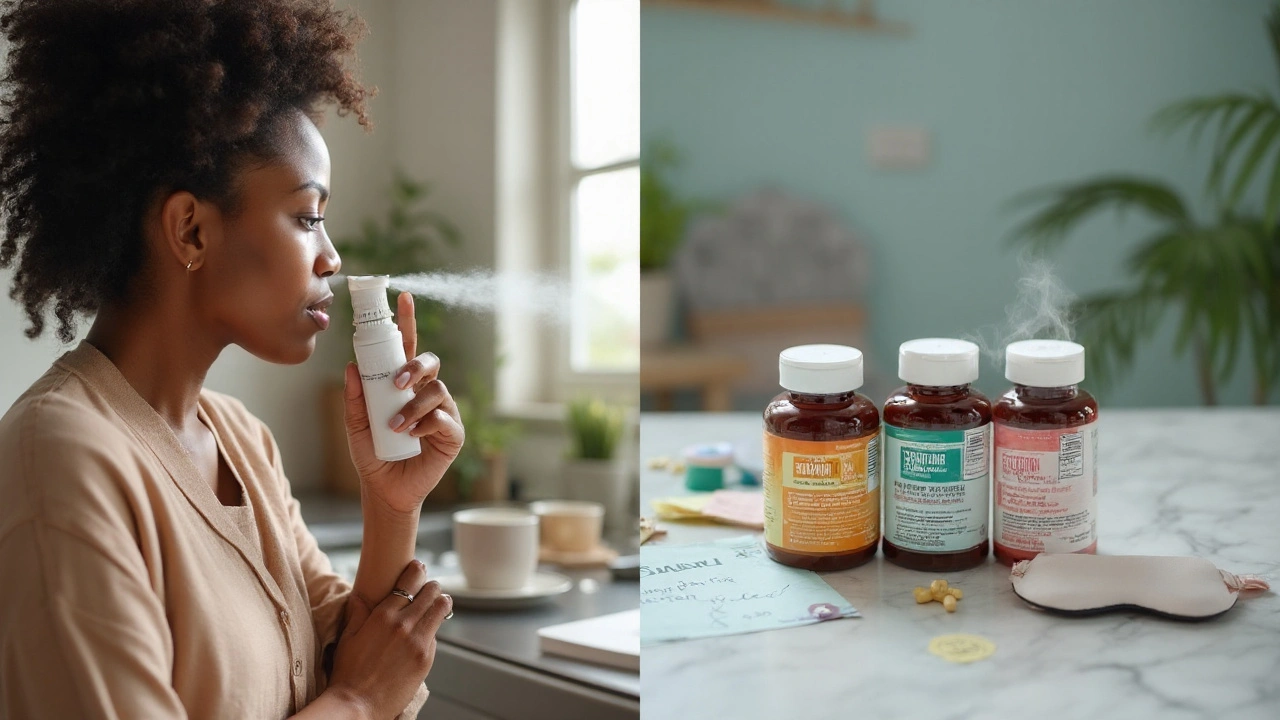Best Antihistamine Picks for 2025 – Your Quick Relief Toolbox
If you’re constantly sneezing, itching, or battling watery eyes, the right antihistamine can be a game‑changer. Below we break down the most effective options on the market right now, how they differ, and what to consider before you grab the next bottle.
First‑Gen vs. Second‑Gen: What’s the Real Difference?
First‑generation antihistamines, like diphenhydramine (Benadryl) and chlorpheniramine, are cheap and work fast, but they cross the blood‑brain barrier. That means you’ll likely feel drowsy, a side effect many people can’t afford at work or school. Second‑generation drugs—cetirizine (Zyrtec), loratadine (Claritin), and fexofenadine (Allegra)—stay mostly out of the brain, so they keep you alert while still blocking histamine.
Which one fits you? If you need a short‑term “night‑time” fix for a worst‑case allergy flare, a first‑gen pill can be handy. For daily, all‑day control, stick with a second‑gen option.
Top Picks for 2025
Cetirizine (Zyrtec) – One daily 10 mg tablet provides strong relief for sneezing, itching, and runny nose. It may cause mild drowsiness in a small group, but most people stay sharp.
Loratadine (Claritin) – The 10 mg tablet is truly non‑drowsy for the majority. It’s a solid all‑rounder, especially for people who need to stay clear‑headed for driving or studying.
Fexofenadine (Allegra) – At 180 mg, it’s the most non‑sedating of the trio and works well for outdoor allergies. Take it with water, not fruit juice, which can lower absorption.
Diphenhydramine (Benadryl) – Ideal for sudden, severe reactions or as a sleep aid after allergy symptoms flare at night. Expect 4–6 hours of drowsiness.
Chlorpheniramine – Often found in combination cold formulas. It’s less sedating than diphenhydramine but still enough to slow you down if you need to stay alert.
How to Use Antihistamines Safely
Start with the lowest effective dose. Most second‑gen drugs work at 10 mg once daily; there’s no benefit in doubling up unless a doctor tells you otherwise. Keep a water glass handy—some antihistamines absorb better with fluids.
Watch for drug interactions. Antacids, certain antibiotics, and alcohol can alter how antihistamines work. If you’re on blood thinners, talk to your pharmacist before adding a new antihistamine.
Timing matters. For seasonal allergies, begin a week before symptoms hit. This pre‑emptive approach lets the medication build up in your system, so you’re less likely to feel the worst of the sneeze attack.
Special Cases: Nasal Sprays and Eye Drops
When pills aren’t enough, try a nasal spray like fluticasone (Flonase) or an eye drop such as ketotifen. Sprays target the nasal lining directly, offering relief within minutes, while eye drops calm itchy, red eyes without affecting the rest of your body.
Combine a oral antihistamine with a spray for full‑day coverage. Just remember not to over‑use any single product—more isn’t always better and can increase side‑effects.
Bottom line: pick a second‑generation antihistamine for everyday use, keep a first‑gen option for emergencies, and consider nasal sprays or eye drops for targeted attacks. Read the label, follow dosage tips, and you’ll stay ahead of allergy season without sacrificing your day.
